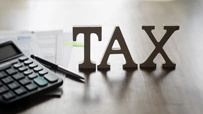How to Avoid Ineligible Deduction Claims While Filing ITR
Disclaimer: Ujjivan Small Finance Bank does not advice or offer personal finance products & services. This blog is for generic information only.
July 09, 2025

Filing your Income Tax Return (ITR) for the financial year 2024-25 (Assessment Year 2025-26) requires careful attention to detail. One major pitfall to avoid this season is claiming tax deductions that you are not eligible for. Ineligible or unsupported deduction claims can trigger scrutiny, delay refunds, and even lead to penalties. Below, we discuss common mistakes in claiming deductions, new rules in place for FY 2024-25, and how to ensure your tax deductions are accurate and compliant.
Understanding Deduction Eligibility and Tax Regimes
Under the old tax regime, taxpayers can claim various deductions (like Section 80C for investments including Tax Saving FDs and home loans), 80D for health insurance premiums, etc.), provided they meet the specific conditions.
In contrast, the new tax regime (which became the default from FY 2024-25) offers lower tax rates but largely excludes most deductions and exemptions. For example, popular deductions such as 80C (up to ₹1.5 lakh for specified investments) and 80D (for medical insurance) are not allowed if you opt for the new regime. Attempting to claim disallowed deductions while on the new regime would be invalid and can cause your return to be flagged. Choose the correct tax regime based on your income and investments, and then only claim deductions permissible under that regime.
Additionally, ensure you use the correct ITR form for your situation. Using the wrong form can itself be a mistake and may lead to a defective return. For instance, if you have capital gains or business income, you must opt for ITR-2 or ITR-3 instead of ITR-1, and so on. Selecting the proper form and regime is the first step to avoiding incorrect claims. It’s always better to know the difference between the forms, like ITR 1 and ITR 2, to avoid any unpleasant surprises at the time of filing returns.
Common Mistakes in Claiming Deductions
1. Claiming Deductions Without Actual Proof or Investment
A frequent mistake is claiming a tax-saving investment or expense that you haven’t actually made, hoping to get a higher refund. In recent years, many taxpayers tried this – for example, claiming deductions under Sections 80C or 80D without having proper receipts or proof. The Income Tax Department has caught on to such practices: in the last few years, thousands of taxpayers received notices for “suspicious” deductions under 80C, 80D, etc. that they couldn’t substantiate.
Some individuals skip submitting proof to employers during the year and then claim large deductions at the time of filing returns to get refunds. With advanced data analytics and the Annual Information Statement (AIS) in play, the tax department is identifying these fraudulent claims and sending notices demanding proof.
Additionally, ensure you’ve all the income tax proofs ready while filing returns, especially if you fall into the old tax regime. You may have to manually enter certain details to ensure your claims are legit.
Bottom line: Only claim those deductions for which you have actually invested or spent money and for which you can furnish documentary evidence if asked. As experts caution, any incorrect or unsupported claim can lead to scrutiny, investigation, or even penalties, so make sure every deduction you claim is backed by proper documentation (receipts, certificates, etc.)
2. Exceeding Eligible Limits or Double-Claiming
Every deduction comes with specific conditions and caps. Ensure you don’t claim more than allowed. For example, Section 80C has an overall limit of ₹1.5 lakh; Section 80D for health insurance has sub-limits (₹25,000 for self/family, additional ₹25,000 for parents, with higher limits if senior citizens are involved). You cannot claim beyond these prescribed limits or for expenses that don’t qualify (like general medical bills under 80D, which actually covers insurance premiums and preventive health check-ups only up to ₹5,000).
Also be cautious about double-claiming deductions. A common scenario is with house rent and home loans: Previously, some taxpayers tried claiming House Rent Allowance (HRA) deduction while also claiming home-loan interest deduction for a house in the same city. This raised red flags, as one typically cannot justify paying rent elsewhere if one owns a house in the same city (unless there are valid reasons). Under the new norms, such claims are under scrutiny – taxpayers will need to justify the legitimacy of maintaining a rented residence in addition to owning a home in the same location. In short, avoid any “double dipping” that the tax rules do not permit.
3. Misusing Deduction Sections (Political Donations, etc.)
The government provides tax breaks for genuine expenses like charitable or political donations, but claiming these without actually contributing is illegal. A recent focus area is Section 80GGC, which allows deductions for donations to political parties. There have been rising instances of fake claims under this section, and the Tax Department has started scrutinizing all 80GGC claims closely.
Many taxpayers who claimed political donation deductions have received notices asking for proof of payment. The department even launched a special campaign (“Tax Assist”) to help taxpayers respond to such notices and to encourage withdrawing incorrect claims. If you did not genuinely donate to a registered political party, do not claim this deduction – it’s not worth the risk. And if you did donate, keep the receipt and payment proof handy. Similar caution applies to Section 80G (charitable donations): claim deductions only for eligible organizations and with proper receipts. Remember, taxpayers can withdraw incorrect donation claims by filing an updated return, and ignoring notices about such claims can invite penalties.
4. Not Reporting All Income (Leading to Mismatches)
This isn’t a deduction per se, but it’s related. Sometimes people focus on deductions and forget to report small income (like bank interest, freelance income, etc.), thinking it will go unnoticed. However, the tax authorities cross-verify incomes and deductions together through your AIS and Form 26AS.
If you claim deductions that seem disproportionate to your reported income or you omit income that appears in AIS, it will raise a red flag. Always declare all your income sources before claiming deductions. For example, interest from bank accounts or bonds is taxable – if you claim a deduction for interest under Section 80TTA (savings account interest deduction) but haven’t reported the interest income itself, the inconsistency could trigger scrutiny. To avoid mismatches, cross-check your Form 26AS and AIS for all income and TDS entries, and ensure your deductions align with your financial transactions.
5. Ignoring Documentation Requirements
Starting this year, simply entering a lump-sum deduction amount in the ITR form isn’t enough. New disclosure rules require detailed information for many deductions at the time of filing. For instance, if you claim a health insurance deduction (80D), you must provide the insurer’s name and policy number in your ITR. If you claim a home loan interest deduction (Section 24b) or an education loan interest (Section 80E), you’ll be asked for details like the lender’s name, loan account number, etc. Even claiming an electric vehicle loan interest deduction (Section 80EEB) now requires the vehicle’s registration number.
For HRA exemption, the form may ask for your landlord’s PAN (if rent exceeds ₹1 lakh/year) and a breakup of rent paid month-wise. These requirements are designed to ensure you have the necessary documents before claiming the deduction. Missing documents can result in denial of the deduction and lead to added tax liability with interest.
So, gather all relevant paperwork (insurance receipts, investment proofs, rent receipts, loan certificates) in advance. If you cannot produce these details, you likely should not claim the deduction.
New Compliance Measures in FY 2024-25
For the FY 2024-25 filing season, the Income Tax Department has implemented stricter compliance checks to curb ineligible deduction claims. Notably, the Central Board of Direct Taxes (CBDT) has mandated itemized disclosure for deductions under the old regime, and many validation checks are built into the ITR forms.
The introduction of these measures comes on the heels of a major investigation that found over 90,000 salaried taxpayers had falsely claimed deductions, resulting in ₹1,070 crore of tax revenue loss. In response, the tax authorities are taking a two-pronged approach: upfront verification at the time of return filing, and backend cross-verification after filing.
What does this mean for you as a taxpayer? Firstly, when you fill out your ITR form (especially ITR-1 or ITR-4 for salaried and small taxpayers), you will notice additional fields asking for specifics of each deduction. The era of simply entering one aggregate number for Section 80C is over – you’ll need to break it down.
The goal is to make “lump-sum claims without supporting documents a thing of the past”, forcing accuracy and transparency. Secondly, once you submit your return, the system will automatically cross-check your claims against information from financial institutions. As per the new rules, “all submitted data will be cross-referenced with third-party databases using PAN/Aadhaar linkages”, meaning the IT department will match your claims with data from banks, insurance companies, mutual funds, etc., to verify if they are genuine. If you claimed an insurance premium, for instance, they can verify it against what the insurer reported. This automated check significantly reduces the chances of any fraudulent or inflated deduction slipping through.
Practical Tips for Error-Free Deduction Claims
Filing your ITR accurately is not just about avoiding trouble; it also ensures you get the tax benefits you rightfully deserve without hiccups. Here are some practical tips to help you stay on the right side of the rules:
Final Thoughts
The crux of avoiding ineligible deduction claims is understanding the tax laws that apply to you and staying truthful. Tax deductions are there to promote savings and genuine expenses – if you stick to claiming what you truly spent or invested, you’re unlikely to run into problems.
Kick-start your financial journey with Ujjivan. Save more with our high-interest Savings Account and Deposit products. Need cash for your business or personal needs? Apply for MSME Loans or Micro Loans with us – we offer competitive rates and quick disbursal. We also offer vehicle loans and home loans tailored for your unique requirements. Experience a smooth banking journey with Ujjivan SFB!
Disclaimer:
The contents herein are only for informational purposes and generic in nature. The content does not amount to an offer, invitation or solicitation of any kind to buy or sell, and are not intended to create any legal rights or obligations. This information is subject to updation, completion, amendment and verification without notice. The contents herein are also subject to other product-specific terms and conditions, as well as any applicable third-party terms and conditions, for which Ujjivan Small Finance Bank assumes no responsibility or liability.
Nothing contained herein is intended to constitute financial, investment, legal, tax, or any other professional advice or opinion. Please obtain professional advice before making investment or any other decisions. Any investment decisions that may be made by the you shall be at your own sole discretion, independent analysis and evaluation of the risks involved. The use of any information set out in this document is entirely at the user’s own risk. Ujjivan Small Finance Bank Limited makes no representation or warranty, express or implied, as to the accuracy and completeness for any information herein. The Bank disclaims any and all liability for any loss or damage (direct, indirect, consequential, or otherwise) incurred by you due to use of or due to investment, product application decisions made by you on the basis of the contents herein. While the information is prepared in good faith from sources deemed reliable (including public sources), the Bank disclaims any liability with respect to accuracy of information or any error or omission or any loss or damage incurred by anyone in reliance on the contents herein, in any manner whatsoever.
To know more about Ujjivan Small Finance Bank Products Visit:"https://www.ujjivansfb.in"
All intellectual property rights, including copyrights, trademarks, and other proprietary rights, pertaining to the content and materials displayed herein, belong
to Ujjivan Small Finance Bank Limited or its licensors. Unauthorised use or misuse of any intellectual property, or other content displayed herein is strictly prohibited and the same is not intended for distribution to, or use by, any person in any jurisdiction where such distribution or use would (by reason of that person’s nationality, residence or otherwise) be contrary to law or registration or would subject Ujjivan Small Finance Bank Limited or its affiliates to any licensing or registration requirements.
FAQs
1. What deductions are not allowed under the new tax regime (FY 2024-25)?
The new tax regime (section 115BAC) for individuals largely does not allow most exemptions and deductions that are available in the old regime. The few exceptions that remain allowed in the new regime include the standard deduction for salary and family pension, employer’s contribution to NPS (80CCD(2)), and deductions for certain specific incomes like 80JJAA (for new employment) or 80U/80DD (disability) – most other tax breaks are disallowed.
Always check the latest provisions, but as a rule of thumb, the new regime trades off deductions for lower slab rates.
2. Do I need to submit proof of my deductions with the ITR?
No, you do not attach or upload proof documents (like receipts or certificates) when submitting your ITR – the process is paperless. However, you must retain those proofs and provide them to the tax department if your case is taken up for scrutiny or verification. In recent years, the tax portal collects detailed info (policy numbers, PAN of institutions, etc.) to internally verify claims.
So, ensure the details you enter match your documents exactly. After filing, the Income Tax Department may ask for evidence if something seems off.
3. How does the tax department verify my deductions?
The tax department uses a combination of technology and data matching to verify deductions nowadays. Firstly, as you fill out your ITR form, certain validations are in place – for example, if you claim a deduction under the old regime, the form may ask for details like PAN of the entity (for donations) or policy/account numbers. This info can be cross-checked against databases. Once you submit your return, the department’s systems will cross-reference your claims with information from various sources.
Latest Blogs

ITR-1 (Sahaj) Restrictions: Income Sources Not Allowed & Filing Rules
With just a few days left before the 15 September 2025 deadline for filing Income Tax Returns (ITRs) for Assessment Year (AY) 2025-26, many taxpayers are rushing to submit their forms online.

GST Rate Cut on Electronics: What It Means for Consumers and Retailers
India’s Goods and Services Tax (GST) system has entered a new era with the rollout of GST 2.0, effective from September 22, 2025.

Banking Safety Guide: How to Avoid QR Code Frauds While Making Payments
India’s love for QR code payments has made transactions lightning-fast, but also opened a new front for cybercriminals.

Scam Alert! Phishing, Vishing, and Smishing Can Drain Out Your Finances
Digital banking in India has transformed the way we manage money.

India’s New GST Reform Bill: What GST 2.0 Means for You
India’s indirect tax system is entering a landmark new phase.


